It takes just one visit to Nova Scotia to understand why it’s home to a thriving community of kayaking enthusiasts. First the obvious: It’s where you’ll find 13,000 kilometers (8,000 miles) of rugged coastline, hundreds of islands and coves, and dozens of white-sand beaches. But it’s just as well known for its flatwater and whitewater paddling on inland rivers and lakes. Nova Scotia’s waterways don’t just give you access to untouched wilderness—they also give insight into the lives of the Mi’kmaq and early explorers who once traversed them.
If you’re wondering where to kayak in Nova Scotia, here are 13 of our favorite places.
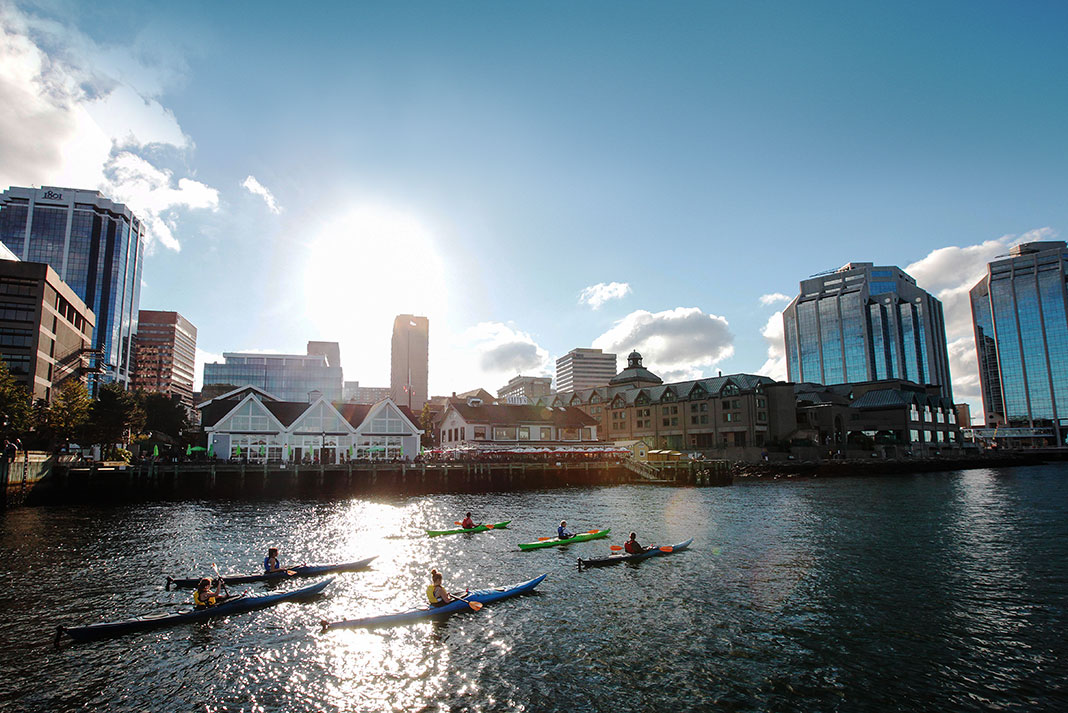
Kayaking Halifax, Nova Scotia
While you might immediately associate kayaking in Nova Scotia with saltwater, consider this: the Halifax region alone is home to over 1,000 lakes, 20 rivers and 23 major coastal areas.
You’re spoilt for choice in the city (read our Guide To Sea Kayaking In Halifax to learn more), but one of the most popular day trips is to start from St. Mary’s Boat Club, where you can paddle along the sheltered Northwest Arm. Run by the city, the boat club offers free canoe rentals, low-cost kayak rentals and guided kayaking paddle nights.
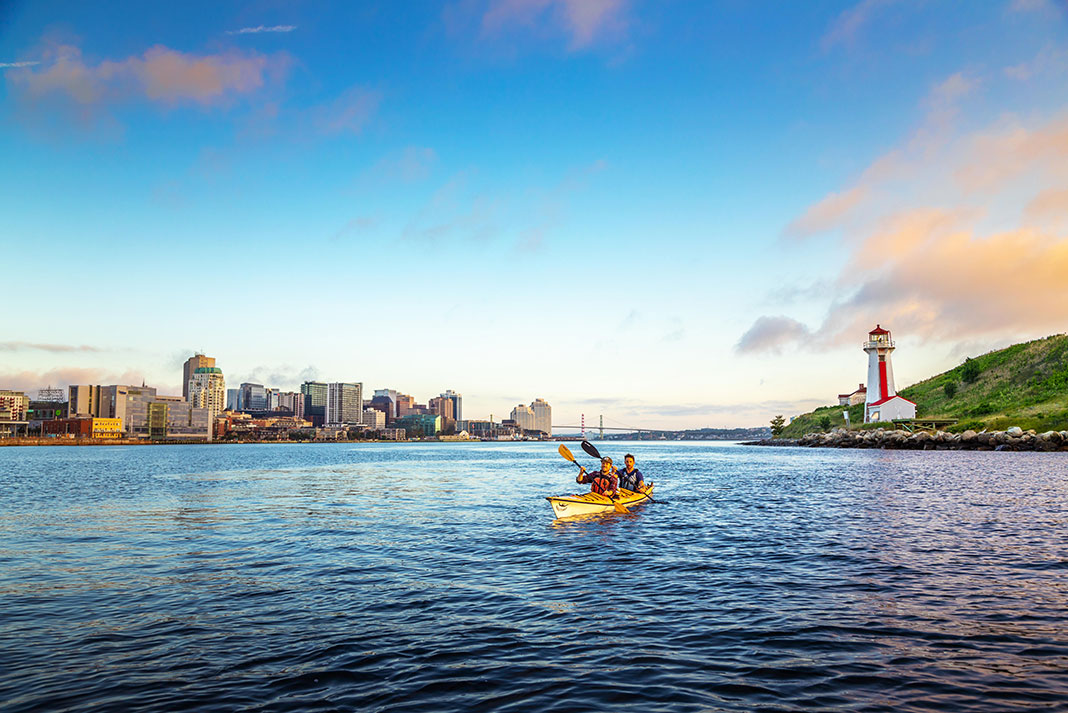
Kayaking Halifax Harbour
There’s a lot to explore in the Halifax Harbour, but it’s a busy body of water, with motorboats, Seadoos, ferries, sailboats and container ships all sharing the same space.
Unless you’re a skilled kayaker, it’s best to take a tour with Kayak Halifax, which offers guided excursions to McNabs Island (home to the historic Fort Ives). Harbour Watercraft Tours & Adventures offers a similar tour, which goes to Georges Island National Historic Site.
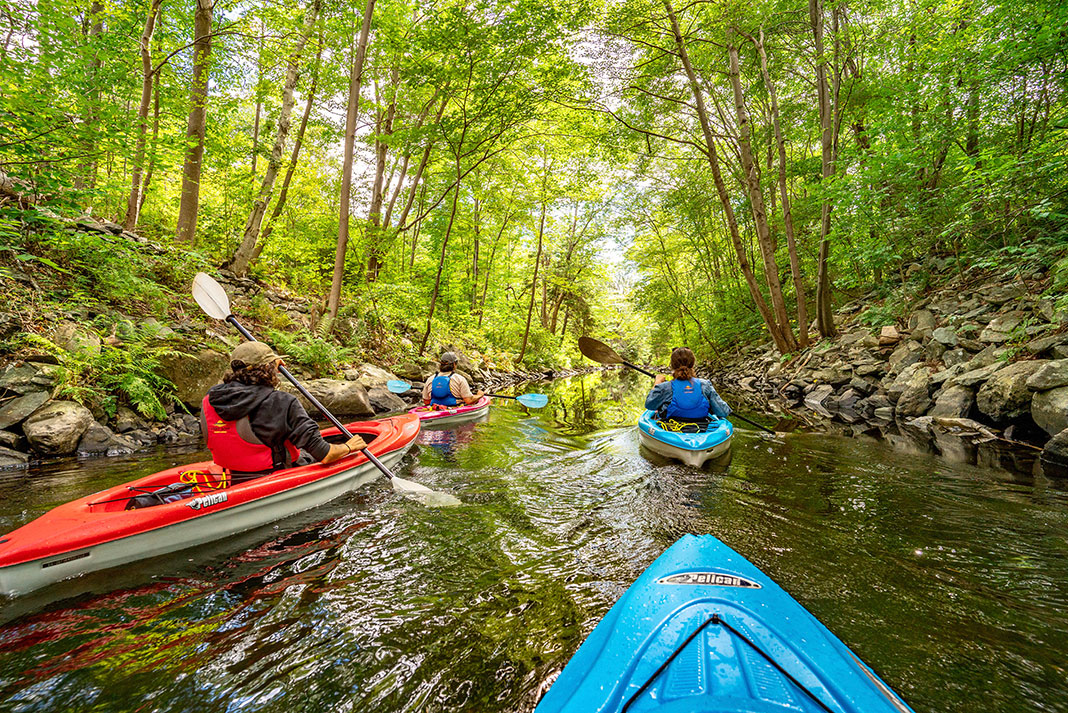
Kayak Dartmouth, Nova Scotia
Located on the eastern shore of the Halifax Harbour, Dartmouth is sometimes called the “city of lakes” for a chain of 23 lakes located within its boundaries, including those that make up the Shubenacadie Canal. Linking the Bay of Fundy with the Halifax Harbour, this canal is partially responsible for the large number of kayaking outfitters and stores in the area, including Wildwood Water Sports at Shubie Park, Old Creel Canoe on Lake Thomas and Freedom Canoe and Kayak.
The canal is relatively calm from Lake Banook until Lake Fletcher, with a few portages required to travel the entire chain of lakes. Grand Lake is difficult to paddle due to high winds, but it’s not until you reach the village of Shubenacadie that the tidal portion of the route begins. This is where you’ll find waves large enough for whitewater kayaking.
The entire route from Dartmouth to the Bay of Fundy is 72 kilometers (44 miles), making this one of the best places to kayak in Nova Scotia.

Bay of Fundy kayaking, Nova Scotia
Considered one of the “seven wonders” of North America, the Bay of Fundy is renowned for having the highest tides on Earth. So, it pays to plan ahead: The time of day that you choose to go kayaking in Nova Scotia’s Bay of Fundy will dramatically change what you experience. Depart at high tide and you’ll be able to paddle through rock formations and alongside dramatic sea cliffs. Or depart at low tide and you’ll be able to see just how extreme the tides really are, with the high-water mark clearly visible on rock pillars that suddenly double in height.
Another option is to experience the best of both worlds by taking a multiday kayak in the Bay of Fundy, Nova Scotia, with an operator such as NovaShores Adventures. Over two or three days, you’ll see old lava flows embedded in ancient rock, explore sea caves and see evidence of the area’s shipbuilding history at Eatonville Harbour.
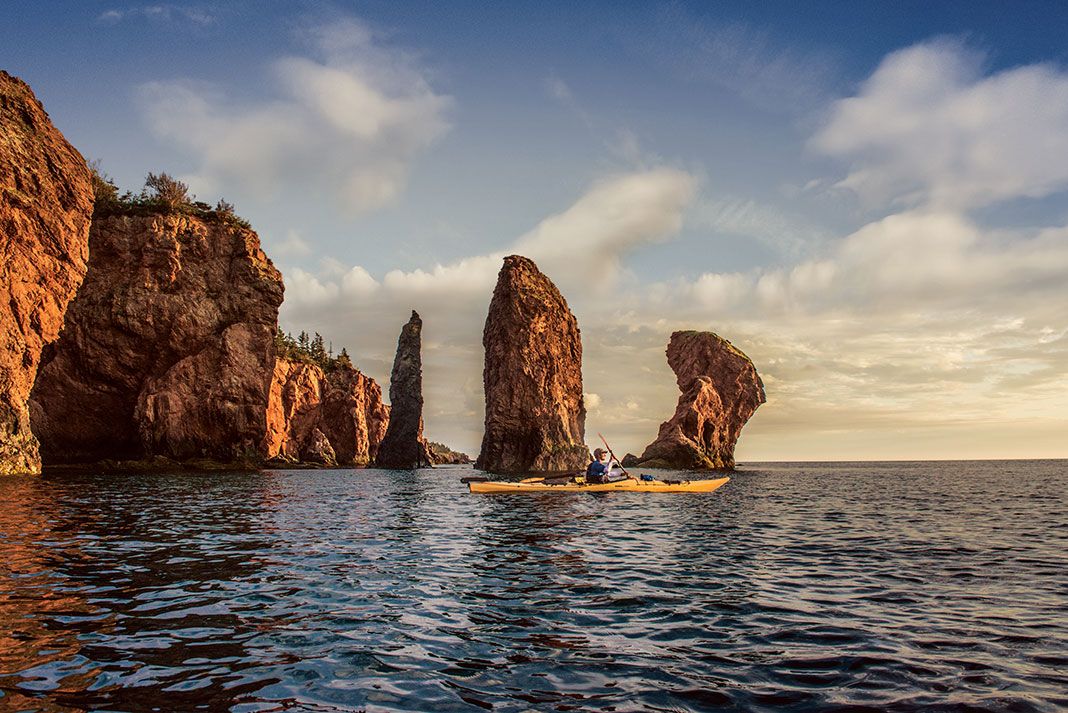
Three Sisters kayaking, Nova Scotia
Located within the waters of Cape Chignecto Provincial Park, the Three Sisters sea stacks are one of the Bay of Fundy’s main kayaking attractions. The remnants of lava flows and magma intrusions from deep within the Earth, local Mi’kmaw legends say they’re three sisters turned to stone.
Although they’re visible from shore, the best way to see them is from a kayak. Head out at high tide, when you can kayak in between them. Contact NovaShores for a day tour.
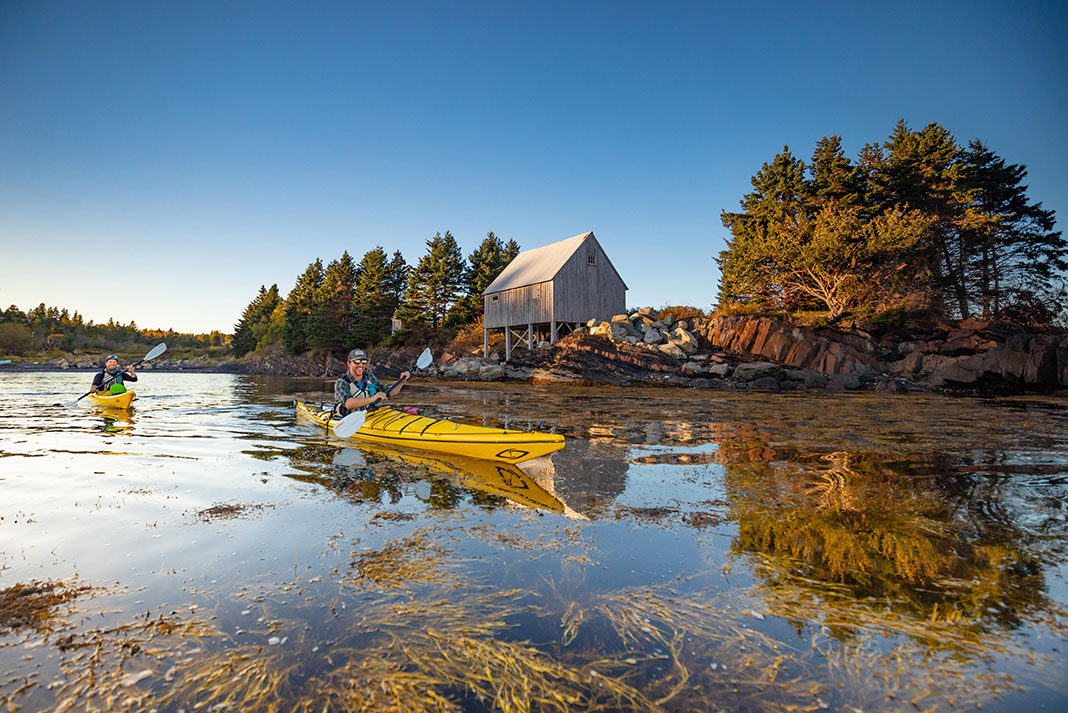
Kayaking Nova Scotia’s South Shore
A region stretching from Halifax to Clark’s Harbour in Nova Scotia’s southwest corner, Nova Scotia’s South Shore is beloved for its picturesque fishing villages, historic lighthouses, fresh seafood, white beaches and the UNESCO World Heritage Site of Lunenburg (home of the Bluenose II racing schooner, found on the Canadian dime).
With countless inlets, coves, islands and bays to explore (including Mahone Bay, where you might just find buried treasure on Oak Island—contact Cape LaHave Adventures for tips) paddling here can be as serene or wild as you want it to be. Contact East Coast Outfitters for tours and sea kayak rentals near Lower Prospect.
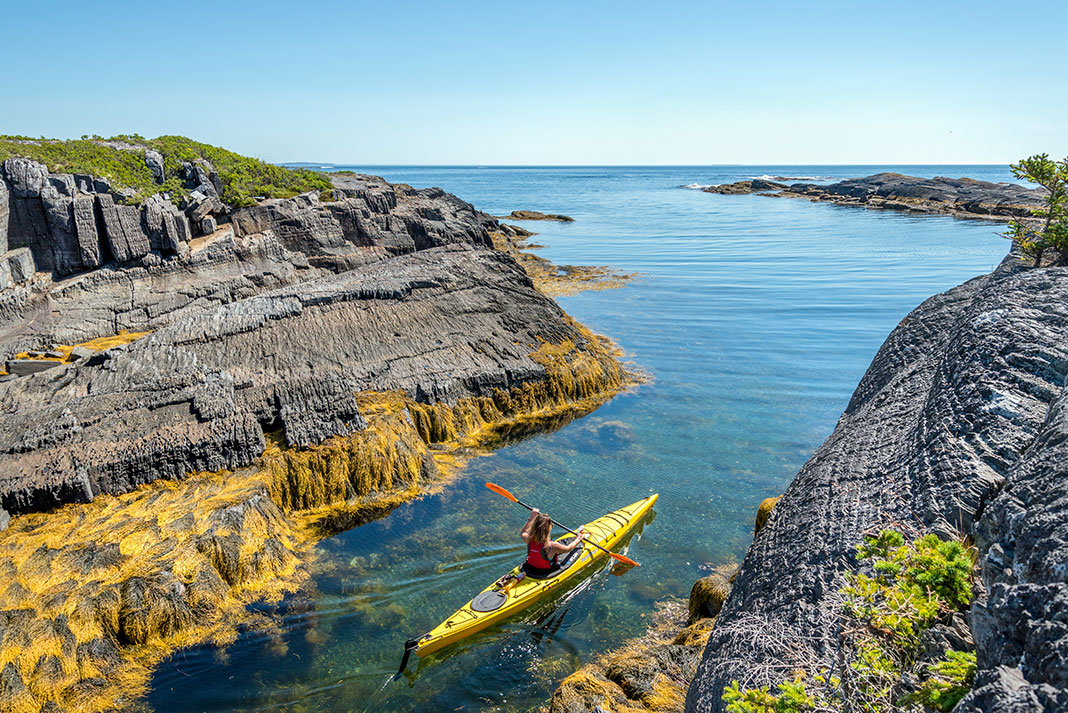
Blue Rocks, Nova Scotia kayaking
Owing to its proximity to Halifax, Peggy’s Cove may get all the glory, but the fishing village of Blue Rocks is just as stunning. A short drive from Lunenburg, it’s known for its blue slate rocks and fishing shacks, including one that’s reportedly the most photographed in the country. The waters are calm and protected, making this an ideal place for beginners to get their paddles wet.
Outfitter Pleasant Paddling offers morning tours to a seal colony, along with afternoon and sunset excursions.
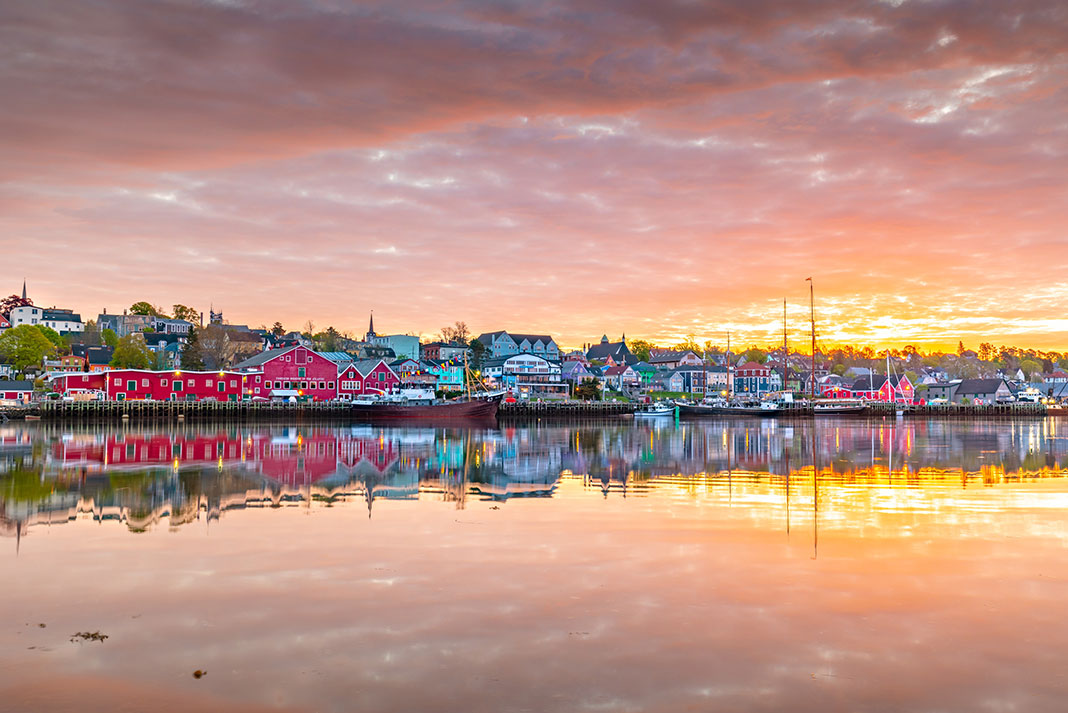
Lunenburg
It doesn’t matter whether you only have a few hours or a full day to spare—kayaking off the coast of Lunenburg provides a unique vantage from which to view the colorful and historic seaside town.
You’ll have the opportunity to float past the boatyards where the Bluenose I and Bluenose II were built, and if time allows, onward to nearby Blue Rocks, where you may spot seals and harbor porpoises along the way. Local Mike Taylor of Lunenburg Paddling offers SUP, single kayak and tandem kayak rentals, along with tours.
Read our Guide To Exploring Lunenburg, Nova Scotia By Kayak for more information.
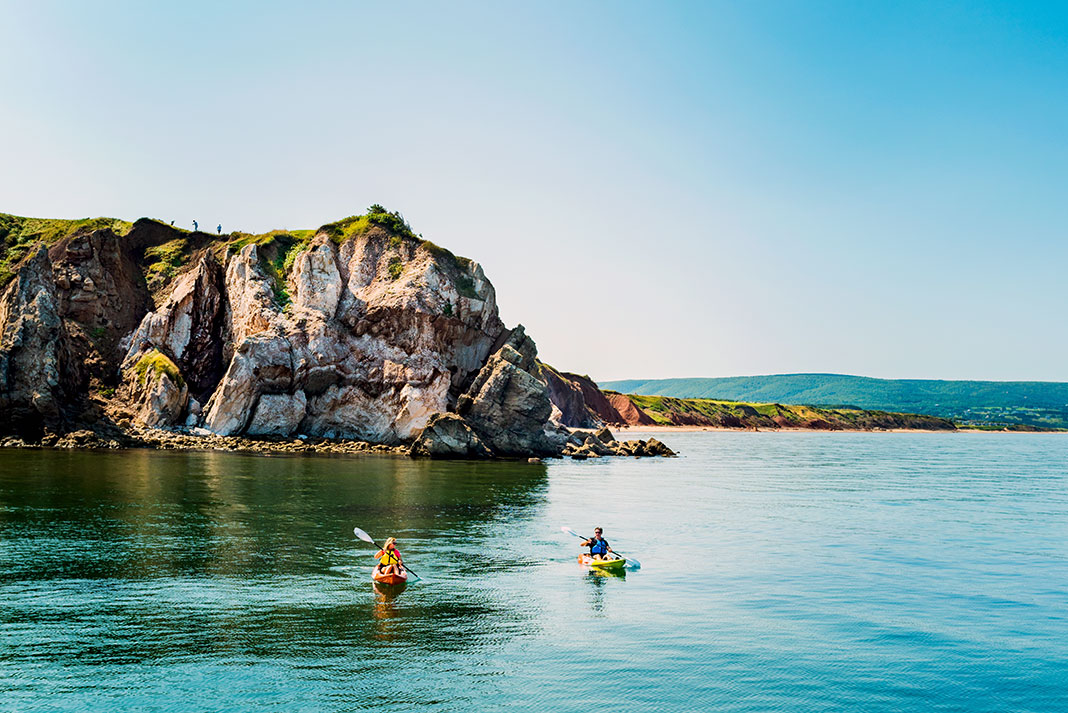
Kayak Cape Breton
There’s a reason so many paddling outfitters have chosen to set up shop in Cape Breton. Arguably the epicenter of paddling in Nova Scotia, it doesn’t get much better than sea kayaking in Cape Breton. Some of the best kayaking in Cape Breton is along its untouched coastlines, but that’s not your only option. There are also the brackish waters of Urquhart’s Pond, and the salt water of Bras d’Or Lake and the Margaree River, a relatively flat stretch of water. Translation? This is also where you’ll experience some of the best river kayaking in Nova Scotia.
Contact Kayak Cape Breton in St. Peter’s for rentals and tours.
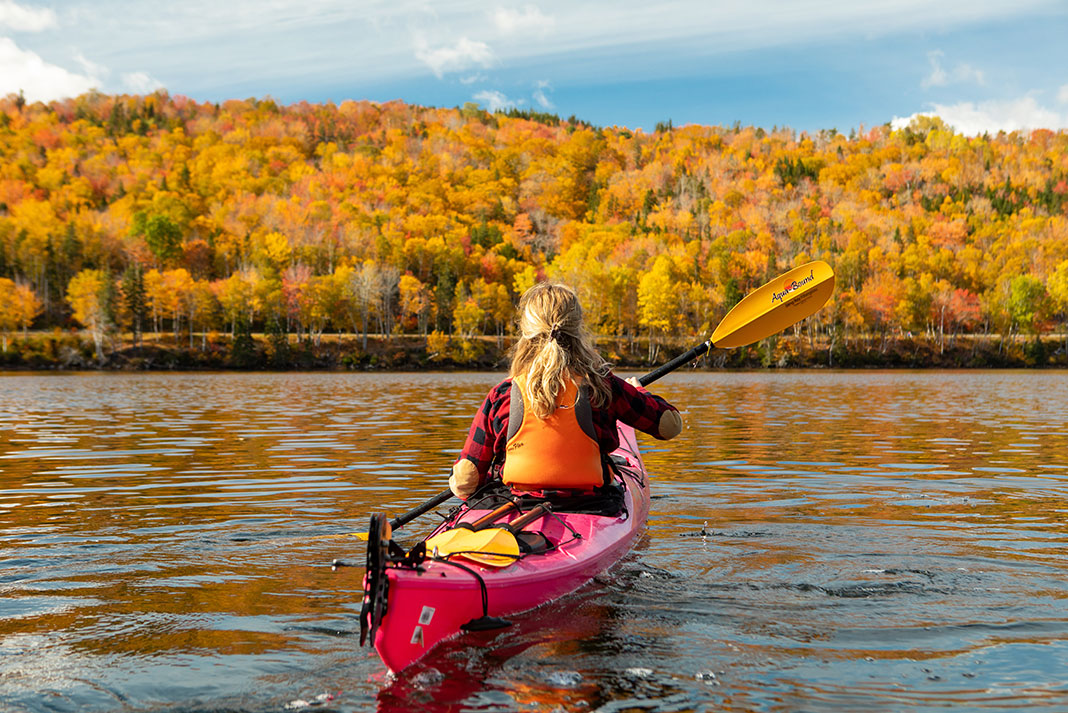
North River kayaking, Cape Breton
The sheltered and calm waters of the Cape Breton sea coast near North River is the ideal place to practice your strokes. Stop for breaks on secluded and untouched granite stone beaches, and look at the shoreline for eagles’ nests, sea caves and harbor minks.
Located 35 minutes from Baddeck on the Cabot Trail, North River Kayak Tours offers half-day and full-day guided tours, as well as on-site accommodation.
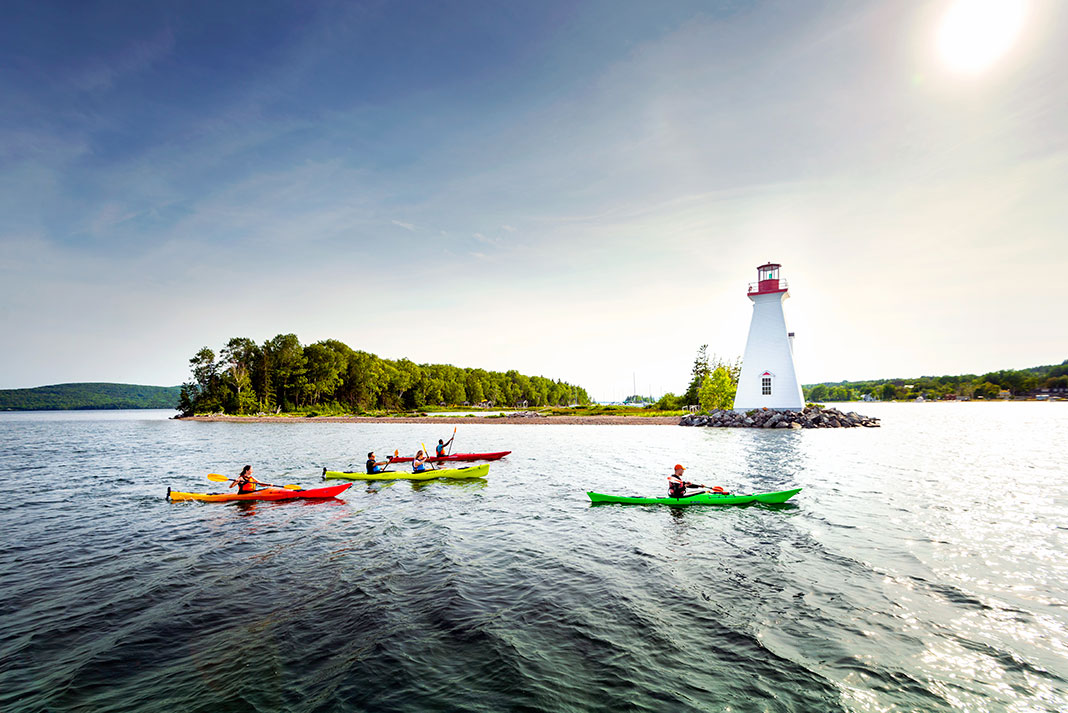
Kayaking Baddeck, Nova Scotia
Considered to be both the beginning and the end of the world-famous Cabot Trail (a highway that encircles Cape Breton) this pretty waterside town is where inventor Alexander Graham Bell elected to spend his summers.
Nearby Baddeck Cabot Trail Campground offers canoe and kayak rentals, which you can use to explore the Baddeck River, an important watershed for brook trout and Atlantic Salmon that empties into Bras d’Or Lake.
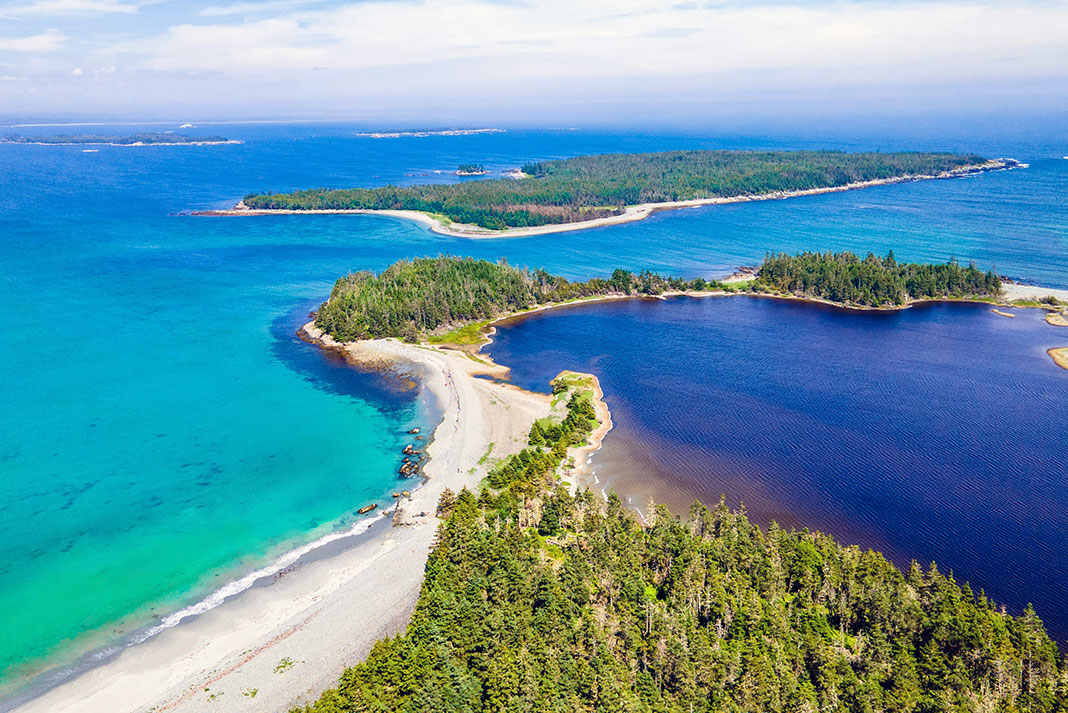
Kayaking 100 Wild Islands, Nova Scotia
As the name implies, if you’re looking for pure wilderness and isolation, you’ll find it about an hour east of Halifax in the 100 Wild Islands. This archipelago of hundreds of islands and islets—which supports pristine forests and coastal habitats, along with globally significant biodiversity—stretches for 30 kilometers (18 miles) from Clam Harbour to Mushaboom. If you’re looking to go kayak camping in Nova Scotia, this is the place.
Murphy’s Camping on the Ocean at Murphy Cove offers rentals, while Coastal Adventures offers rentals alongside day tours and three- or five-day trips. Expect to see seabird colonies, seal haul-outs, sandy beaches and hidden coves that can only be accessed by kayak.
Learn more by reading our Guide To Paddling Nova Scotia’s 100 Wild Islands.
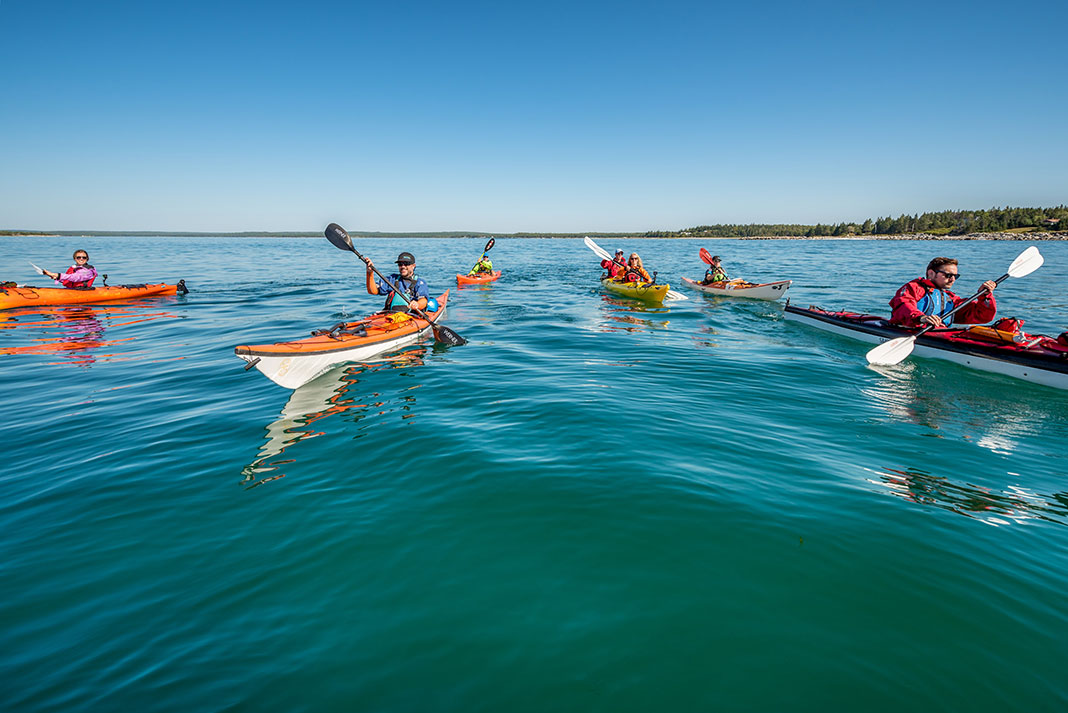
Kayaking Kejimkujik
Located in southwest Nova Scotia, Kejimkujik National Park and National Historic Site (often just called “Keji”) protects 404 square kilometers (251 square miles) of old-growth forest, rare wildlife, Mi’kmaw petroglyphs and the lake that it’s named for. There’s also a secondary area: The Kejimkujik Seaside Adjunct, which is along the coast near Port Jolie.
The best way to explore the park’s historic waterways—which have been used for centuries by Indigenous people—is by kayak. There are dozens of interconnected lakes and rivers, with backcountry camping available, making a multiday trip possible. The Mersey River is calm and popular with families.
Kejimkujik Lake, on the other hand, is large enough for whitecaps to form, but also has some of the best camping, with spots on its islands booking out in advance. Parks Canada recommends tackling the lake in the early morning or late afternoon to avoid the wind. Whynot Adventure Outfitters offers rentals, shuttles and guided tours.




how munch cost for rent kayak.
God article. Would be better with some maps.